It seems to be becoming more and more common, the allergic reaction in dogs. Allergy in dogs can be described as hypersensitivity to certain foreign substances, leading to an extreme immune system response. The dog can also have an allergic reaction to food.
The allergic reaction can occur seasonally, similar to hay fever in humans. An allergic reaction can also be triggered by substances in the animal's environment to which it is allergic. Examples include grasses, pollen and house dust mites. Another common problem is flea allergy.
Certain breeds are more prone to developing an allergy. Breeds where this is common include retrievers, terriers, Lhasa Apso, Miniature Poodles, Pugs, Boxers, Miniature Schnauzers, Sharpei, German Shepherds, Dalmatians, English and Irish Setters. The allergy often develops between the ages of one and three, but sometimes an allergy can develop later in life.
What are the causes of an allergic reaction?
An allergy in dogs can have various causes. We have listed the most common causes:
-
inherited cause
-
fleas and mites
-
Foods such as certain meats, grains or nuts
-
dander
-
pollen, grasses and trees
-
feathers
-
Perfume, for example in personal care products
-
medication
-
Contact with floor coverings
-
Contact with linoleum or paint
-
contact with cleaning agents
What are the symptoms of an allergic reaction?
The most noticeable symptoms are itching, scratching, biting and licking on the head, paws, armpits and groin. Licking the paws or fur is particularly noticeable in dogs with light-colored fur, as the fur often turns black-brown. Skin infection is also common, which can lead to red patches. Scabs, baldness, thickening and darkening of the skin are also some symptoms that indicate an allergic reaction.
If the skin becomes inflamed, the inflammation can be made worse by a bacterial infection. An ear infection can develop because bacteria have a better environment to multiply. Eye infection can also result from irritation of the conjunctiva.
When should you go to the vet?
An allergic reaction often manifests itself as itching. Itching is worse than pain. If one or more allergy symptoms appear, it is important to see a veterinarian. The veterinarian can carry out examinations and may already recommend soothing agents such as ointments or drops to combat the symptoms. An allergy is very uncomfortable for a dog, so a visit to the vet should not be delayed too long.
How is the diagnosis made?
First, there is a conversation between the veterinarian and the owner. In this way, the vet is already trying to rule out some possibilities. A detailed physical examination is then carried out. This can be done with a skin test or a blood test. A skin test involves injecting multiple substances, which causes swelling around the substance to which the dog is allergic. A blood test involves doing a blood screening. This screening can be divided into specific groups:
-
fungal spores, fleas and mites
-
trees
-
grasses and herbs
If the dog reacts positively to one of these groups, a further subdivision can be made as to what type of grass or herb it is.
How does the allergy treatment work?
As soon as it is known to which substance the dog is allergic, treatment can begin. Treatment may include desensitization. The dog receives injections v
How can it be prevented?
In many cases, an allergic reaction is a hereditary problem and therefore often cannot be prevented. It is recommended not to breed with dogs showing an allergic reaction. In the event of a flea allergy, you can wash the dog with a special flea shampoo or treat it with an anti-flea spray, an anti-flea collar or a flea comb. For another cause, you can try to avoid the allergens, but this often proves difficult in practice.
You can also give the dog special food. For example, you can feed him hypoallergenic food, a food used to diagnose and treat food sensitivities.
This text was translated by a translation machine
 Horse Pharmacy
Horse Pharmacy Rugs
Rugs Care
Care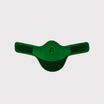 Saddle and Attachments
Saddle and Attachments Leg Protection
Leg Protection Bridles
Bridles Feed
Feed Fly Masks
Fly Masks Saddle Pads
Saddle Pads Headcollars and Ropes
Headcollars and Ropes Bits
Bits Other Disciplines
Other Disciplines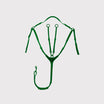 Reins and Auxiliary Reins
Reins and Auxiliary Reins Clipping
Clipping Western
Western Eventing
Eventing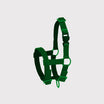 Foals
Foals Reflection
Reflection Therapy Products
Therapy Products Boots and Shoes
Boots and Shoes Breeches and Belts
Breeches and Belts Tops
Tops Safety
Safety Competition
Competition Heated Clothing
Heated Clothing Gloves
Gloves Socks
Socks Spurs and Attachments
Spurs and Attachments Technology
Technology Whips
Whips Gifts
Gifts Casual Wear
Casual Wear Underwear
Underwear Rider Pharmacy
Rider Pharmacy Bags
Bags Books
Books Laundry supplies
Laundry supplies Jewelry
Jewelry Feed and Waterbowls
Feed and Waterbowls Equipment
Equipment Tack Room
Tack Room Pest Control
Pest Control Arena
Arena Horse Toys
Horse Toys Wheelbarrows
Wheelbarrows Yard
Yard Surveillance
Surveillance Disinfect
Disinfect Washing Area
Washing Area Lighting
Lighting Horse Pasture
Horse Pasture Current Conductors
Current Conductors Pole
Pole Insulators
Insulators Energisers
Energisers Gate Handles
Gate Handles Batteries and Accumulator
Batteries and Accumulator Nets
Nets Grounding
Grounding Tools
Tools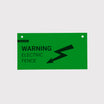 Fencing Security
Fencing Security Wolf Defense
Wolf Defense Fencing Sets
Fencing Sets Fence locks
Fence locks Dogs
Dogs Cats
Cats Rodents
Rodents Dogs Pharmacy
Dogs Pharmacy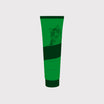 Cats Pharmacy
Cats Pharmacy Rodents Pharmacy
Rodents Pharmacy Cattle Pharmacy
Cattle Pharmacy Poultry Pharmacy
Poultry Pharmacy Veterinary Supplies
Veterinary Supplies Cattle
Cattle Sheep and Goats
Sheep and Goats Poultry
Poultry Heat Lamps
Heat Lamps Calves
Calves Marking
Marking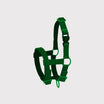 Halters
Halters